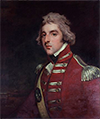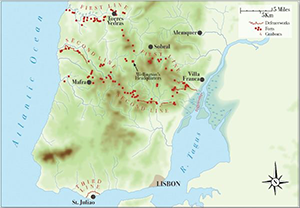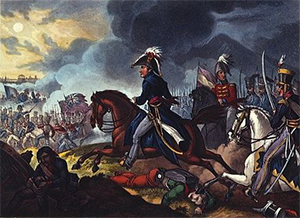Arthur Wellesley, the Duke of Wellington
Arthur Wellesley, the Duke of Wellington, was a United Kingdom military commander perhaps most well-known for his defeat of Napoleon Bonaparte at the Battle of Waterloo. Wellington also served for a time as the Prime Minister of the U.K. He was born on May 1, 1769, in Dublin, Ireland. His parents were Garret and Anne Wesley, the Earl and Countess of Mornington. Young Arthur attended schools in Chelsea, Dublin, and Trim. When Garret Wesley died, in 1781, Arthur, then 12, enrolled at Eton College. He did not excel there; and in 1785, he and his mother moved to Brussels. 
Arthur attended the French Royal Academy of Equitation, in Angers, and excelled as a horseman. He more wanted to pursue a career in music but followed his mother's wishes and joined a Highland regiment. After a stint as chief of staff to the Lord Lieutenant of Ireland, he joined a dragoons regiment and then, in 1789, became a Member of the Irish House of Commons for Trim. He served another term in that capacity a few years later. Continuing in the army, he achieved the rank of lieutenant colonel by 1793, when he gained command of a brigade. The following year, he saw combat at Flanders, at the Battle of Boxtel, during the War of the First Coalition. Two years later, he and his regiment reported to India, where they saw combat in the Fourth Anglo-Mysore War. At the Battle of Seringapatam, he was shot in the knee; after the battle, he suffered a serious illness. He recovered from both and, after the end of that war, served as Governor of Mysore. It was during his time in India that he changed his name from Wesley to Wellesley. He served several more years in the East, helping the United Kingdom win the Second Anglo-Maratha War. That conflict ended in 1805, and he returned to the West, commanding troops in Germany. He sailed from India with his brother Richard, who had been Governor-General of India. Wellesley returned to politics in 1806, winning election to the U.K. Parliament as a member of the House of Commons for Rye. The next year, he served as Chief Secretary of Ireland. He also married Catherine "Kitty" Pakenham. (He had proposed to her several years earlier but was refused.) They had two children together. 
In 1808, Wellesley returned to England and, named a lieutenant general, he took command of the Anglo-Portuguese Army, fighting against France in the Peninsular War. He gained a significant victory at the Battle of Vimeiro in that year. It was during this war that Wellesley gained his reputation for being a masterful defensive tactician, exemplified by his directing the construction of the Lines of Torres Vedras, a three-tiered system of defensive works designed to frustrate the French invasion of Portugal. His first significant action in spring 1809 was a route of the French troops under Marshal Jean-de-Dieu Soult in Porto. The guerrilla war against the French occupation troops ground on, and Wellesley's troops joined up with a Spanish force under General Gregoria García de la Cuesta. That joint force defeated a French force at Talavera on July 27, and that victory earned Wellesley a spot in the Peerage. He was made Viscount Wellington of Talavera and of Wellington, Somerset. Wellington confronted a resurgent French force under Marshal André Masséna in 1810, ultimately dissuading the French force from assaulting the Lines of Torres Vedras. Masséna led his men away after six months of frustration. 
Wellington achieved the rank of general in 1811 and, the following year, captured the key Spanish fortresses of Ciudad Rodrigo and then Badajoz. A further victory, at Salamanca, gave rise to the liberation of Madrid, and he was named Earl of Wellington and then Marquess of Wellington. Next page > Fame in Politics and War > Page 1, 2 |
|




